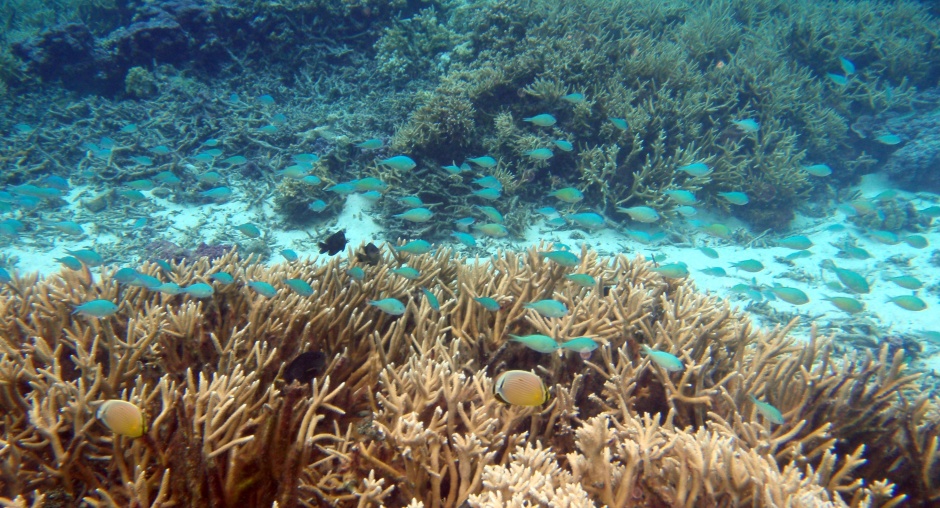
Coral reefs are highly disturbed systems, and many reefs globally have transitioned to macroalgae-dominated reefs following disturbances that kill coral (e.g., coral predator outbreaks, storms, bleaching events). In general, ecological resilience describes the rate and process of:
-
resistance, the amount of external forcing that a system can absorb without a qualitative change
-
recovery, the tendency of a system to return to its previous state following a perturbation
Moorea is an ideal location to study both of these attributes, as the fore reef was recently impacted by a natural outbreak of the corallivorous Crown-of-Thorns Seastar (COTS) followed by a cyclone in early 2010. These disturbances had differential impacts around the island and provide an opportunity to study spatial heterogeneity in the resistance and recovery of the system.
Three major questions guide our investigation of the resilience of contemporary reefs:
-
What are the causes of spatial variation in the rate of re-assembly of disturbed communities?
-
What are the landscape-scale patterns of community structure and dynamics of lagoon habitats?
-
What are the causes of spatial heterogeneity in ecological resilience?



